Structure–Function Relationships of Nanocarbon/Polymer Composites for Chemiresistive Sensing: A Review
Abstract
1. Introduction
2. Design and Mechanism Operation of Polymer-Composite-Based Chemiresistors
3. Synthesis and Preparation of Nanocarbon/Polymer Composite Layers
4. Nanocarbon/Polymer Composite as Chemiresistive Sensors
4.1. G;GO;rGO/Polymer Composite
4.2. GNRs/Polymer Composite
4.3. CNT/Polymer Composite
4.4. FLN/Polymer Composite
4.5. Carbon Black/Polymer Composite
5. Conclusions and Future Outlooks
Author Contributions
Funding
Conflicts of Interest
References
- Lange, U.; Mirsky, V.M. Chemiresistors based on conducting polymers: A review on measurement techniques. Anal. Chim. Acta 2011, 687, 105–113. [Google Scholar] [CrossRef] [PubMed]
- Penza, M.; Cassano, G.; Rossi, R.; Alvisi, M.; Rizzo, A.; Signore, M.A.; Dikonimos, T.; Serra, E.; Giorgi, R. Enhancement of sensitivity in gas chemiresistors based on carbon nanotube surface functionalized with noble metal (Au, Pt) nanoclusters. Appl. Phys. Lett. 2007, 90, 173123. [Google Scholar] [CrossRef]
- Zhao, W.; Al-Nasser, L.F.; Shan, S.; Li, J.; Skeete, Z.; Kang, N.; Luo, J.; Lu, S.; Zhong, C.-J.; Grausgruber, C.J.; et al. Detection of mixed volatile organic compounds and lung cancer breaths using chemiresistor arrays with crosslinked nanoparticle thin films. Sens. Actuators B Chem. 2016, 232, 292–299. [Google Scholar] [CrossRef]
- Hughes, R.C.; Schubert, W.K. Thin films of Pd/Ni alloys for detection of high hydrogen concentrations. J. Appl. Phys. 1992, 71, 542–544. [Google Scholar] [CrossRef]
- Ehsani, M.; Hamidon, M.N.; Toudeshki, A.; Abadi, M.H.S.; Rezaeian, S. CO2Gas Sensing Properties of Screen-Printed La2O3/SnO2Thick Film. IEEE Sens. J. 2016, 16, 6839–6845. [Google Scholar] [CrossRef]
- Holliday, B.J.; Stanford, T.B.; Swager, T.M. Chemoresistive Gas-Phase Nitric Oxide Sensing with Cobalt-Containing Conducting Metallopolymers. Chem. Mater. 2006, 18, 5649–5651. [Google Scholar] [CrossRef]
- Ramnani, P.; Saucedo, N.M.; Mulchandani, A. Carbon nanomaterial-based electrochemical biosensors for label-free sensing of environmental pollutants. Chemosphere 2016, 143, 85–98. [Google Scholar] [CrossRef]
- Lewis, N.S. Comparisons between Mammalian and Artificial Olfaction Based on Arrays of Carbon Black−Polymer Composite Vapor Detectors. Acc. Chem. Res. 2004, 37, 663–672. [Google Scholar] [CrossRef]
- Salavagione, H.J.; Díez-Pascual, A.M.; Lázaro, E.; Vera, S.; Gómez-Fatou, M.A. Chemical sensors based on polymer composites with carbon nanotubes and graphene: The role of the polymer. J. Mater. Chem. A 2014, 2, 14289–14328. [Google Scholar] [CrossRef]
- Harito, C.; Bavykin, D.V.; Yuliarto, B.; Dipojono, H.K.; Walsh, F.C. Polymer nanocomposites having a high filler content: Synthesis, structures, properties, and applications. Nanoscale 2019, 11, 4653–4682. [Google Scholar] [CrossRef]
- Wu, K.; Song, Z.; He, L.; Ni, Y. Analysis of optimal crosslink density and platelet size insensitivity in graphene-based artificial nacres. Nanoscale 2017, 10, 556–565. [Google Scholar] [CrossRef]
- Wang, Y.; Yuan, H.; Ma, P.; Bai, H.; Chen, M.; Dong, W.; Xie, Y.; Deshmukh, Y.S. Superior Performance of Artificial Nacre Based on Graphene Oxide Nanosheets. ACS Appl. Mater. Interfaces 2017, 9, 4215–4222. [Google Scholar] [CrossRef]
- Song, P.; Xu, Z.; Wu, Y.; Cheng, Q.; Guo, Q.; Wang, H. Super-tough artificial nacre based on graphene oxide via synergistic interface interactions of π-π stacking and hydrogen bonding. Carbon 2017, 111, 807–812. [Google Scholar] [CrossRef]
- Chen, K.; Tang, X.; Yue, Y.; Zhao, H.; Guo, L. Strong and Tough Layered Nanocomposites with Buried Interfaces. ACS Nano 2016, 10, 4816–4827. [Google Scholar] [CrossRef]
- Chang, C.-P.; Yuan, C.-L. The fabrication of a MWNTs–polymer composite chemoresistive sensor array to discriminate between chemical toxic agents. J. Mater. Sci. 2009, 44, 5485–5493. [Google Scholar] [CrossRef]
- Jia, X.-M.; Qian, H.-J.; Lu, Z.-Y. The interfacial structure and dynamics in a polymer nanocomposite containing small attractive nanoparticles: A full atomistic molecular dynamics simulation study. Phys. Chem. Chem. Phys. 2020, 22, 11400–11408. [Google Scholar] [CrossRef]
- Rima, P.; Mitra, A.K. Synthesis and Study of Optical and Electrical Characteristics of Single-Wall Carbon Nanotube/Gold Nanohybrid. J. Nano Res. 2012, 17, 27–33. [Google Scholar] [CrossRef]
- Asadian, E.; Shahrokhian, S.; Zad, A.I.; Jokar, E. In-situ electro-polymerization of graphene nanoribbon/polyaniline composite film: Application to sensitive electrochemical detection of dobutamine. Sens. Actuators B Chem. 2014, 196, 582–588. [Google Scholar] [CrossRef]
- Wang, X.; Hu, Y.; Song, L.; Yang, H.; Xing, W.; Lu, H. In situ polymerization of graphene nanosheets and polyurethane with enhanced mechanical and thermal properties. J. Mater. Chem. 2011, 21, 4222–4227. [Google Scholar] [CrossRef]
- Arzac, A.; Leal, G.P.; Fajgar, R.; Tomovska, R. Comparison of the Emulsion Mixing and In Situ Polymerization Techniques for Synthesis of Water-Borne Reduced Graphene Oxide/Polymer Composites: Advantages and Drawbacks. Part. Part. Syst. Charact. 2014, 31, 143–151. [Google Scholar] [CrossRef]
- Díez-Pascual, A.M. Carbon-Based Polymer Nanocomposites for High-Performance Applications. Polymers 2020, 12, 872. [Google Scholar] [CrossRef]
- Minea, A.A. A Review on Electrical Conductivity of Nanoparticle-Enhanced Fluids. Nanomaterials 2019, 9, 1592. [Google Scholar] [CrossRef]
- Tian, W.; Liu, X.; Yu, W. Research Progress of Gas Sensor Based on Graphene and Its Derivatives: A Review. Appl. Sci. 2018, 8, 1118. [Google Scholar] [CrossRef]
- Gengler, R.; Veligura, A.; Enotiadis, A.; Diamanti, E.K.; Gournis, D.; Józsa, C.; van Wees, B.J.; Rudolf, P. Large-Yield Preparation of High-Electronic-Quality Graphene by a Langmuir-Schaefer Approach. Small 2010, 6, 35–39. [Google Scholar] [CrossRef]
- Minitha, C.R.; Anithaa, V.S.; Subramaniam, V.; Kumar, R.T.R. Impact of Oxygen Functional Groups on Reduced Graphene Oxide-Based Sensors for Ammonia and Toluene Detection at Room Temperature. ACS Omega 2018, 3, 4105–4112. [Google Scholar] [CrossRef] [PubMed]
- Son, Y.-W.; Cohen, M.L.; Louie, S.G. Energy Gaps in Graphene Nanoribbons. Phys. Rev. Lett. 2006, 97, 216803. [Google Scholar] [CrossRef]
- Jiao, L.; Wang, X.; Diankov, G.; Wang, H.; Dai, H. Facile synthesis of high-quality graphene nanoribbons. Nat. Nanotechnol. 2010, 5, 321–325. [Google Scholar] [CrossRef] [PubMed]
- Rafiee, M.A.; Lu, W.; Thomas, A.V.; Zandiatashbar, A.; Rafiee, J.; Tour, J.M.; Koratkar, N.A. Graphene Nanoribbon Composites. ACS Nano 2010, 4, 7415–7420. [Google Scholar] [CrossRef]
- Shang, S.; Gan, L.; Yuen, C.W.M.; Jiang, S.-X.; Luo, N.M. The synthesis of graphene nanoribbon and its reinforcing effect on poly (vinyl alcohol). Compos. Part A Appl. Sci. Manuf. 2015, 68, 149–154. [Google Scholar] [CrossRef]
- Trajcheva, A.; Politakos, N.; Pérez, B.T.; Joseph, Y.; Gilev, J.B.; Tomovska, R. QCM nanocomposite gas sensors – Expanding the application of waterborne polymer composites based on graphene nanoribbon. Polymer 2021, 213, 123335. [Google Scholar] [CrossRef]
- Johnson, A.P.; Gangadharappa, H.; Pramod, K. Graphene nanoribbons: A promising nanomaterial for biomedical applications. J. Control. Release 2020, 325, 141–162. [Google Scholar] [CrossRef]
- Geng, Z.; Hähnlein, B.; Granzner, R.; Auge, M.; Lebedev, A.A.; Davydov, V.Y.; Kittler, M.; Pezoldt, J.; Schwierz, F. Graphene Nanoribbons for Electronic Devices. Ann. Phys. 2017, 529, 1700033. [Google Scholar] [CrossRef]
- Shekhirev, M.; Lipatov, A.; Torres, A.; Vorobeva, N.S.; Harkleroad, A.; Lashkov, A.; Sysoev, V.; Sinitskii, A. Highly Selective Gas Sensors Based on Graphene Nanoribbons Grown by Chemical Vapor Deposition. ACS Appl. Mater. Interfaces 2020, 12, 7392–7402. [Google Scholar] [CrossRef]
- Han, M.Y.; Oezyilmaz, B.; Zhang, Y.; Kim, P. Energy Band-Gap Engineering of Graphene Nanoribbons. Phys. Rev. Lett. 2007, 98, 206805. [Google Scholar] [CrossRef]
- Kausar, A. Graphene nanoribbon: Fundamental aspects in polymeric nanocomposite. Polym. Technol. Mater. 2019, 58, 579–596. [Google Scholar] [CrossRef]
- Liu, Z.; Tabakman, S.; Welsher, K.; Dai, H. Carbon nanotubes in biology and medicine: In vitro and in vivo detection, imaging and drug delivery. Nano Res. 2009, 2, 85–120. [Google Scholar] [CrossRef]
- Bernholc, J.; Brenner, D.W.; Nardelli, M.B.; Meunier, V.; Roland, C. Mechanical and Electrical Properties of Nanotubes. Annu. Rev. Mater. Res. 2002, 32, 347–375. [Google Scholar] [CrossRef]
- Liang, Y.; Li, Y.; Wang, H.; Dai, H. Strongly Coupled Inorganic/Nanocarbon Hybrid Materials for Advanced Electrocatalysis. J. Am. Chem. Soc. 2013, 135, 2013–2036. [Google Scholar] [CrossRef]
- Norizan, M.N.; Moklis, M.H.; Demon, S.Z.N.; Halim, N.A.; Samsuri, A.; Mohamad, I.S.; Knight, V.F.; Abdullah, N. Carbon nanotubes: Functionalisation and their application in chemical sensors. RSC Adv. 2020, 10, 43704–43732. [Google Scholar] [CrossRef]
- Korobov, M.F.; Smith, A.L. Solubility of the Fullerenes, Fullerenes: Chemistry, Physics and Technology; John Wiley & Sons Inc.: New York, NY, USA, 2000. [Google Scholar]
- Studebaker, M.L. The Chemistry of Carbon Black and Reinforcement. Rubber Chem. Technol. 1957, 30, 1400–1483. [Google Scholar] [CrossRef]
- Sun, B.; Kong, F.; Zhang, M.; Wang, W.; Kc, B.S.; Tjong, J.; Sain, M. Percolation Model for Renewable-Carbon Doped Functional Composites in Packaging Application: A Brief Review. Coatings 2020, 10, 193. [Google Scholar] [CrossRef]
- Stauffer, D.; Aharony, A. Conductivity and Related Properties. In Introduction To Percolation Theory, 2nd ed.; Taylor & Francis: London, UK, 1992. [Google Scholar]
- Bauhofer, W.; Kovacs, J.Z. A review and analysis of electrical percolation in carbon nanotube polymer composites. Compos. Sci. Technol. 2009, 69, 1486–1498. [Google Scholar] [CrossRef]
- Wissinger, R.G.; Paulaitis, M.E. Swelling and sorption in polymer–CO2 mixtures at elevated pressures. J. Polym. Sci. Part B Polym. Phys. 1987, 25, 2497–2510. [Google Scholar] [CrossRef]
- Bai, H.; Shi, G. Gas Sensors Based on Conducting Polymers. Sensors 2007, 7, 267–307. [Google Scholar] [CrossRef]
- Lakard, B.; Carquigny, S.; Segut, O.; Patois, T.; Lakard, S. Gas Sensors Based on Electrodeposited Polymers. Metals 2015, 5, 1371–1386. [Google Scholar] [CrossRef]
- Wong, Y.C.; Ang, B.C.; Haseeb, A.S.M.A.; Baharuddin, A.A.; Wong, Y.H. Review—Conducting Polymers as Chemiresistive Gas Sensing Materials: A Review. J. Electrochem. Soc. 2019, 167, 037503. [Google Scholar] [CrossRef]
- Zhang, M.; Li, Y.; Su, Z.; Wei, G. Recent advances in the synthesis and applications of graphene–polymer nanocomposites. Polym. Chem. 2015, 6, 6107–6124. [Google Scholar] [CrossRef]
- Al-Saleh, M.H.; Al-Anid, H.K.; Hussain, Y.A. CNT/ABS nanocomposites by solution processing: Proper dispersion and selective localization for low percolation threshold. Compos. Part A Appl. Sci. Manuf. 2013, 46, 53–59. [Google Scholar] [CrossRef]
- Zhang, D.; Tong, J.; Xia, B. Humidity-sensing properties of chemically reduced graphene oxide/polymer nanocomposite film sensor based on layer-by-layer nano self-assembly. Sens. Actuators B Chem. 2014, 197, 66–72. [Google Scholar] [CrossRef]
- Shah, R.K.; Paul, D. Organoclay degradation in melt processed polyethylene nanocomposites. Polymers 2006, 47, 4075–4084. [Google Scholar] [CrossRef]
- Wang, X.; Xing, W.; Song, L.; Yang, H.; Hu, Y.; Yeoh, G.H. Fabrication and characterization of graphene-reinforced waterborne polyurethane nanocomposite coatings by the sol–gel method. Surf. Coat. Technol. 2012, 206, 4778–4784. [Google Scholar] [CrossRef]
- Fomo, M.; Waryo, T.; Feleni, U.; Baker, B.; Iwuoha, E. Electrochemical Polymerization. In Functional Biopolymers; Springer: Cham, Switzerland, 2019. [Google Scholar]
- Radacsi, N.; Nuansing, W. Fabrication of 3D and 4D polymer micro- and nanostructures based on electrospinning. In 3D and 4D Printing of Polymer Nanocomposite Materials; Elsevier: Amsterdam, The Netherlands, 2020; pp. 191–229. [Google Scholar]
- Brown, T.D.; Dalton, P.D.; Hutmacher, D.W. Melt electrospinning today: An opportune time for an emerging polymer process. Prog. Polym. Sci. 2016, 56, 116–166. [Google Scholar] [CrossRef]
- Pötschke, P.; Bhattacharyya, A.R.; Janke, A.; Pegel, S.; Leonhardt, A.; Täschner, C.; Ritschel, M.; Roth, S.; Hornbostel, B.; Čech, J. Melt Mixing as Method to Disperse Carbon Nanotubes into Thermoplastic Polymers. Fuller. Nanotub. Carbon Nanostructures 2005, 13, 211–224. [Google Scholar] [CrossRef]
- Liu, Y.-L.; Chen, W.-H. Modification of Multiwall Carbon Nanotubes with Initiators and Macroinitiators of Atom Transfer Radical Polymerization. Macromolecules 2007, 40, 8881–8886. [Google Scholar] [CrossRef]
- Kuila, T.; Bose, S.; Hong, C.E.; Uddin, E.; Khanra, P.; Kim, N.H.; Lee, J.H. Preparation of functionalized graphene/linear low density polyethylene composites by a solution mixing method. Carbon 2011, 49, 1033–1037. [Google Scholar] [CrossRef]
- Yoonessi, M.; Gaier, J.R. Highly Conductive Multifunctional Graphene Polycarbonate Nanocomposites. ACS Nano 2010, 4, 7211–7220. [Google Scholar] [CrossRef]
- Putz, K.W.; Compton, O.C.; Palmeri, M.J.; Nguyen, S.T.; Brinson, L.C. High-Nanofiller-Content Graphene Oxide-Polymer Nanocomposites via Vacuum-Assisted Self-Assembly. Adv. Funct. Mater. 2010, 20, 3322–3329. [Google Scholar] [CrossRef]
- Sheydaei, M.; Alinia-Ahandani, E. Synthesis and characterization of methylene-xylene-based polysulfide block-copolymer/carbon nanotube nanocomposites via in situ polymerization method. J. Sulfur Chem. 2020, 41, 421–434. [Google Scholar] [CrossRef]
- Zhang, Q.; Chen, G.; Wu, K.; Shi, J.; Liang, L.; Lu, M. Self-healable and reprocessible liquid crystalline elastomer and its highly thermal conductive composites by incorporating graphene via in-situ polymerization. J. Appl. Polym. Sci. 2020, 138, 49748. [Google Scholar] [CrossRef]
- Siljander, S.; Keinänen, P.; Räty, A.; Ramakrishnan, K.R.; Tuukkanen, S.; Kunnari, V.; Harlin, A.; Vuorinen, J.; Kanerva, M. Effect of Surfactant Type and Sonication Energy on the Electrical Conductivity Properties of Nanocellulose-CNT Nanocomposite Films. Int. J. Mol. Sci. 2018, 19, 1819. [Google Scholar] [CrossRef] [PubMed]
- Grzelczak, M.; Vermant, J.; Furst, E.M.; Liz-Marzán, L.M. Directed Self-Assembly of Nanoparticles. ACS Nano 2010, 4, 3591–3605. [Google Scholar] [CrossRef] [PubMed]
- Tripathi, S.N.; Saini, P.; Gupta, D.; Choudhary, V. Electrical and mechanical properties of PMMA/reduced graphene oxide nanocomposites prepared via in situ polymerization. J. Mater. Sci. 2013, 48, 6223–6232. [Google Scholar] [CrossRef]
- Li, S.; Wang, T.; Yang, Z.; He, J.; Wang, J.; Zhao, L.; Lu, H.; Tian, T.; Liu, F.; Sun, P.; et al. Room temperature high performance NH3 sensor based on GO-rambutan-like polyaniline hollow nanosphere hybrid assembled to flexible PET substrate. Sens. Actuators B Chem. 2018, 273, 726–734. [Google Scholar] [CrossRef]
- Adnan, M.M.; Dalod, A.R.M.; Balci, M.H.; Glaum, J.; Einarsrud, M.-A. In Situ Synthesis of Hybrid Inorganic–Polymer Nanocomposites. Polymers 2018, 10, 1129. [Google Scholar] [CrossRef] [PubMed]
- Bhattacharya, M. Polymer Nanocomposites—A Comparison between Carbon Nanotubes, Graphene, and Clay as Nanofillers. Materials 2016, 9, 262. [Google Scholar] [CrossRef]
- Gao, C.; Li, W.; Morimoto, H.; Nagaoka, A.Y.; Maekawa, T. Magnetic Carbon Nanotubes: Synthesis by Electrostatic Self-Assembly Approach and Application in Biomanipulations. J. Phys. Chem. B 2006, 110, 7213–7220. [Google Scholar] [CrossRef]
- Smith, K.H.; Tejeda-Montes, E.; Poch, M.; Mata, A. Integrating top-down and self-assembly in the fabrication of peptide and protein-based biomedical materials. Chem. Soc. Rev. 2011, 40, 4563–4577. [Google Scholar] [CrossRef]
- Wu, J.; Zhang, Q.; Wang, J.-J.; Huang, X.; Bai, H. A self-assembly route to porous polyaniline/reduced graphene oxide composite materials with molecular-level uniformity for high-performance supercapacitors. Energy Environ. Sci. 2018, 11, 1280–1286. [Google Scholar] [CrossRef]
- He, F.; Lam, K.-H.; Fan, J.; Chan, L.H. Improved dielectric properties for chemically functionalized exfoliated graphite nanoplates/syndiotactic polystyrene composites prepared by a solution-blending method. Carbon 2014, 80, 496–503. [Google Scholar] [CrossRef]
- Jiang, Z.; Wang, J.; Meng, L.; Huang, Y.; Liu, L. A highly efficient chemical sensor material for ethanol: Al2O3/Graphene nanocomposites fabricated from graphene oxide. Chem. Commun. 2011, 47, 6350–6352. [Google Scholar] [CrossRef]
- Lawal, A.T. Recent progress in graphene based polymer nanocomposites. Cogent Chem. 2020, 6, 1833476. [Google Scholar] [CrossRef]
- Xu, C.; Gao, J.; Xiu, H.; Li, X.; Zhang, J.; Luo, F.; Zhang, Q.; Chen, F.; Fu, Q. Can in situ thermal reduction be a green and efficient way in the fabrication of electrically conductive polymer/reduced graphene oxide nanocomposites? Compos. Part A Appl. Sci. Manuf. 2013, 53, 24–33. [Google Scholar] [CrossRef]
- Yang, J.-H.; Lee, Y.-D. Highly electrically conductive rGO/PVA composites with a network dispersive nanostructure. J. Mater. Chem. 2012, 22, 8512–8517. [Google Scholar] [CrossRef]
- Fan, W.; Zhang, C.; Tjiu, W.W.; Liu, T. Fabrication of electrically conductive graphene/polystyrene composites via a combination of latex and layer-by-layer assembly approaches. J. Mater. Res. 2013, 28, 611–619. [Google Scholar] [CrossRef]
- Park, O.-K.; Kim, S.-G.; You, N.-H.; Ku, B.-C.; Hui, D.; Lee, J.H. Synthesis and properties of iodo functionalized graphene oxide/polyimide nanocomposites. Compos. Part B Eng. 2014, 56, 365–371. [Google Scholar] [CrossRef]
- Qi, X.-Y.; Yan, N.; Jiang, Z.; Cao, Y.-K.; Yu, Z.-Z.; Yavari, F.; Koratkar, N. Enhanced Electrical Conductivity in Polystyrene Nanocomposites at Ultra-Low Graphene Content. ACS Appl. Mater. Interfaces 2011, 3, 3130–3133. [Google Scholar] [CrossRef]
- Liu, N.; Luo, F.; Wu, H.; Liu, Y.; Zhang, C.; Chen, J. One-Step Ionic-Liquid-Assisted Electrochemical Synthesis of Ionic-Liquid-Functionalized Graphene Sheets Directly from Graphite. Adv. Funct. Mater. 2008, 18, 1518–1525. [Google Scholar] [CrossRef]
- Ramasubramaniam, R.; Chen, J.; Liu, H. Homogeneous carbon nanotube/polymer composites for electrical applications. Appl. Phys. Lett. 2003, 83, 2928–2930. [Google Scholar] [CrossRef]
- Li, Y.; Yang, T.; Yu, T.; Zheng, L.; Liao, K. Synergistic effect of hybrid carbon nantube–graphene oxide as a nanofiller in enhancing the mechanical properties of PVA composites. J. Mater. Chem. 2011, 21, 10844–10851. [Google Scholar] [CrossRef]
- Abdulla, S.; Mathew, T.L.; Pullithadathil, B. Highly sensitive, room temperature gas sensor based on polyaniline-multiwalled carbon nanotubes (PANI/MWCNTs) nanocomposite for trace-level ammonia detection. Sens. Actuators B Chem. 2015, 221, 1523–1534. [Google Scholar] [CrossRef]
- Seekaew, Y.; Lokavee, S.; Phokharatkul, D.; Wisitsoraat, A.; Kerdcharoen, T.; Wongchoosuk, C. Low-cost and flexible printed graphene–PEDOT:PSS gas sensor for ammonia detection. Org. Electron. 2014, 15, 2971–2981. [Google Scholar] [CrossRef]
- Jang, W.-K.; Yun, J.; Kim, H.-I.; Lee, Y.-S. Improvement of ammonia sensing properties of polypyrrole by nanocomposite with graphitic materials. Colloid Polym. Sci. 2012, 291, 1095–1103. [Google Scholar] [CrossRef]
- Wu, Z.; Chen, X.; Zhu, S.; Zhou, Z.; Yao, Y.; Quan, W.; Liu, B. Enhanced sensitivity of ammonia sensor using graphene/polyaniline nanocomposite. Sens. Actuators B Chem. 2013, 178, 485–493. [Google Scholar] [CrossRef]
- Konwer, S.; Guha, A.K.; Dolui, S.K. Graphene oxide-filled conducting polyaniline composites as methanol-sensing materials. J. Mater. Sci. 2013, 48, 1729–1739. [Google Scholar] [CrossRef]
- Yang, Y.; Li, S.; Yang, W.; Yuan, W.; Xu, J.; Jiang, Y. In Situ Polymerization Deposition of Porous Conducting Polymer on Reduced Graphene Oxide for Gas Sensor. ACS Appl. Mater. Interfaces 2014, 6, 13807–13814. [Google Scholar] [CrossRef] [PubMed]
- Alizadeh, T.; Soltani, L.H. Graphene/poly(methyl methacrylate) chemiresistor sensor for formaldehyde odor sensing. J. Hazard. Mater. 2013, 248-249, 401–406. [Google Scholar] [CrossRef]
- Tung, T.T.; Castro, M.; Feller, J.-F.; Kim, T.Y.; Suh, K.S. Hybrid film of chemically modified graphene and vapor-phase-polymerized PEDOT for electronic nose applications. Org. Electron. 2013, 14, 2789–2794. [Google Scholar] [CrossRef]
- Dunst, K.; Jurkow, D.; Jasiński, P. Laser patterned platform with PEDOT–graphene composite film for NO 2 sensing. Sens. Actuators B Chem. 2016, 229, 155–165. [Google Scholar] [CrossRef]
- Jiang, X.; Yang, T.; Li, C.; Zhang, R.; Zhang, L.; Zhao, X.; Zhu, H. Rapid Liquid Recognition and Quality Inspection with Graphene Test Papers. Glob. Chall. 2017, 1, 1700037. [Google Scholar] [CrossRef]
- Li, L.; Raji, A.-R.O.; Fei, H.; Yang, Y.; Samuel, E.L.G.; Tour, J.M. Nanocomposite of Polyaniline Nanorods Grown on Graphene Nanoribbons for Highly Capacitive Pseudocapacitors. ACS Appl. Mater. Interfaces 2013, 5, 6622–6627. [Google Scholar] [CrossRef]
- Nadiv, R.; Shtein, M.; Buzaglo, M.; Peretz-Damari, S.; Kovalchuk, A.; Wang, T.; Tour, J.M.; Regev, O. Graphene nanoribbon – Polymer composites: The critical role of edge functionalization. Carbon 2016, 99, 444–450. [Google Scholar] [CrossRef]
- Moniruzzaman, M.; Winey, K.I. Polymer Nanocomposites Containing Carbon Nanotubes. Macromolecules 2006, 39, 5194–5205. [Google Scholar] [CrossRef]
- Choudhary, V.; Gupta, A. Polymer/Carbon Nanotube Nanocomposites. In Carbon Nanotubes-Polymer Nanocomposites; IntechOpen: Rijeka, Croatia, 2011. [Google Scholar]
- Cantaragiu, A.M.; Fetecau, C.; Paraschiv, G. Effect of carbon nanotubes concentration on creep behaviour of polypropyl-ene-carbon nanotubes nanocomposites. Mater. Plast. 2015, 52, 69–74. [Google Scholar]
- Bokobza, L. Mechanical, electrical and spectroscopic investigations of carbon nanotube-reinforced elastomers. Vib. Spectrosc. 2009, 51, 52–59. [Google Scholar] [CrossRef]
- Manchado, M.L.; Valentini, L.; Biagiotti, J.; Kenny, J. Thermal and mechanical properties of single-walled carbon nanotubes–polypropylene composites prepared by melt processing. Carbon 2005, 43, 1499–1505. [Google Scholar] [CrossRef]
- Mazinani, S.; Ajji, A.; Dubois, C. Morphology, structure and properties of conductive PS/CNT nanocomposite electrospun mat. Polymers 2009, 50, 3329–3342. [Google Scholar] [CrossRef]
- Grunlan, J.C.; Mehrabi, A.R.; Bannon, M.V.; Bahr, J.L. Water-Based Single-Walled-Nanotube-Filled Polymer Composite with an Exceptionally Low Percolation Threshold. Adv. Mater. 2004, 16, 150–153. [Google Scholar] [CrossRef]
- Sen, R.; Zhao, B.; Perea, D.; Itkis, M.E.; Hu, H.; Love, J.; Bekyarova, E.; Haddon, R.C. Preparation of Single-Walled Carbon Nanotube Reinforced Polystyrene and Polyurethane Nanofibers and Membranes by Electrospinning. Nano Lett. 2004, 4, 459–464. [Google Scholar] [CrossRef]
- Skakalova, V.; Dettlaff-Weglikowska, U.; Roth, S. Electrical and mechanical properties of nanocomposites of single wall carbon nanotubes with PMMA. Synth. Met. 2005, 152, 349–352. [Google Scholar] [CrossRef]
- Dettlaff-Weglikowska, U.; Kaempgen, M.; Hornbostel, B.; Skakalova, V.; Wang, J.; Liang, J.; Roth, S. Conducting and transparent SWNT/polymer composites. Phys. Status Solidi (b) 2006, 243, 3440–3444. [Google Scholar] [CrossRef]
- Shi, J.-H.; Yang, B.-X.; Pramoda, K.P.; Goh, S.H. Enhancement of the mechanical performance of poly(vinyl chloride) using poly(n-butyl methacrylate)-grafted multi-walled carbon nanotubes. Nanotechnology 2007, 18, 375704. [Google Scholar] [CrossRef]
- Deng, H.; Bilotti, E.; Zhang, R.; Peijs, T. Effective reinforcement of carbon nanotubes in polypropylene matrices. J. Appl. Polym. Sci. 2010, 118, 30–41. [Google Scholar] [CrossRef]
- He, L.; Jia, Y.; Meng, F.; Li, M.; Liu, J. Gas sensors for ammonia detection based on polyaniline-coated multi-wall carbon nanotubes. Mater. Sci. Eng. B 2009, 163, 76–81. [Google Scholar] [CrossRef]
- Sharma, S.; Hussain, S.; Singh, S.; Islam, S. MWCNT-conducting polymer composite based ammonia gas sensors: A new approach for complete recovery process. Sens. Actuators B Chem. 2014, 194, 213–219. [Google Scholar] [CrossRef]
- Zhang, W.; Cao, S.; Wu, Z.; Zhang, M.; Cao, Y.; Guo, J.; Zhong, F.; Duan, H.; Jia, D. High-Performance Gas Sensor of Polyaniline/Carbon Nanotube Composites Promoted by Interface Engineering. Sensors 2019, 20, 149. [Google Scholar] [CrossRef]
- Li, W.; Kim, D. Polyaniline/multiwall carbon nanotube nanocomposite for detecting aromatic hydrocarbon vapors. J. Mater. Sci. 2011, 46, 1857–1861. [Google Scholar] [CrossRef]
- Philip, B.; Abraham, J.K.; Chandrasekhar, A.; Varadan, V.K. Carbon nanotube/PMMA composite thin films for gas-sensing applications. Smart Mater. Struct. 2003, 12, 935–939. [Google Scholar] [CrossRef]
- Bashiri, S.; Vessally, E.; Bekhradnia, A.; Hosseinian, A.; Edjlali, L. Utility of extrinsic [60] fullerenes as work function type sensors for amphetamine drug detection: DFT studies. Vacuum 2017, 136, 156–162. [Google Scholar] [CrossRef]
- Jiang, Z.; Zhang, H.; Zhang, Z.; Murayama, H.; Okamoto, K. Improved bonding between PAN-based carbon fibers and fullerene-modified epoxy matrix. Compos. Part A Appl. Sci. Manuf. 2008, 39, 1762–1767. [Google Scholar] [CrossRef]
- Ogasawara, T.; Ishida, Y.; Kasai, T. Mechanical properties of carbon fiber/fullerene-dispersed epoxy composites. Compos. Sci. Technol. 2009, 69, 2002–2007. [Google Scholar] [CrossRef]
- Bronnikov, S.; Podshivalov, A.; Kostromin, S.; Asandulesa, M.; Cozan, V. Electrical conductivity of polyazomethine/fullerene C60 nanocomposites. Phys. Lett. A 2017, 381, 796–800. [Google Scholar] [CrossRef]
- Tayfun, U.; Kanbur, Y.; Abaci, U.; Guney, H.Y.; Bayramli, E. Mechanical, flow and electrical properties of thermoplastic polyurethane/fullerene composites: Effect of surface modification of fullerene. Compos. Part B Eng. 2015, 80, 101–107. [Google Scholar] [CrossRef]
- Cheng, X.; Yokozeki, T.; Yamamoto, M.; Wang, H.; Wu, L.; Koyanagi, J.; Sun, Q. The decoupling electrical and thermal conductivity of fullerene/polyaniline hybrids reinforced polymer composites. Compos. Sci. Technol. 2017, 144, 160–168. [Google Scholar] [CrossRef]
- Al Sheheri, S.Z.; Al-Amshany, Z.M.; Al Sulami, Q.A.; Tashkandi, N.Y.; Hussein, M.A.; El-Shishtawy, R.M. The preparation of carbon nanofillers and their role on the performance of variable polymer nanocomposites. Des. Monomers Polym. 2019, 22, 8–53. [Google Scholar] [CrossRef]
- Spahr, M.E.; Rothon, R. Carbon Black as a Polymer Filler. In Fillers for Polymer Applications; Springer: Cham, Switzerland, 2017. [Google Scholar]
- Lohar, G.S.; Jogi, B.F. Influence of Carbon Black (CB) on Mechanical Behaviour and Microscopic Analysis of Poly-propylene (PP)/ Acrylonitrile-butadiene- styrene (ABS) Nanocomposites. Procedia Manuf. 2018, 20, 85–90. [Google Scholar] [CrossRef]
- Kanbur, Y.; Kücükyavuz, Z. Electrical and Mechanical Properties of Polypropylene/Carbon Black Composites. J. Reinf. Plast. Compos. 2008, 28, 2251–2260. [Google Scholar] [CrossRef]
- Liang, T.; Yan, C.; Zhou, S.; Zhang, Y.; Yang, B. Carbon black reinforced polymethyl methacrylate (PMMA)-based composite particles: Preparation, characterization, and application. J. Geophys. Eng. 2017, 14, 1225–1232. [Google Scholar] [CrossRef]
- Hopkins, A.R.; Lewis, N.S. Detection and classification characteristics of arrays of carbon black/organic polymer composite chemiresistive vapor detectors for the nerve agent simulants dimethylmethylphosphonate and diisopropylmethylphosponate. Anal. Chem. 2001, 73, 884–892. [Google Scholar] [CrossRef] [PubMed][Green Version]
- Sisk, B.C.; Lewis, N.S. Vapor Sensing Using Polymer/Carbon Black Composites in the Percolative Conduction Regime. Langmuir 2006, 22, 7928–7935. [Google Scholar] [CrossRef] [PubMed]
- Mallya, A.N.; Kottokkaran, R.; Ramamurthy, P.C. Conducting polymer–carbon black nanocomposite sensor for volatile organic compounds and correlating sensor response by molecular dynamics. Sens. Actuators B Chem. 2014, 201, 308–320. [Google Scholar] [CrossRef]
- Lei, H.; Pitt, W.G.; McGrath, L.K.; Ho, C.K. Modeling carbon black/polymer composite sensors. Sens. Actuators B Chem. 2007, 125, 396–407. [Google Scholar] [CrossRef]
- Kyrylyuk, A.V.; Hermant, M.C.; Schilling, T.; Klumperman, B.; Koning, C.E.; Van Der Schoot, P. Controlling electrical percolation in multicomponent carbon nanotube dispersions. Nat. Nanotechnol. 2011, 6, 364–369. [Google Scholar] [CrossRef]
- Bo, X.-Z.; Lee, C.Y.; Strano, M.S.; Goldfinger, M.B.; Nuckolls, C.; Blanchet, G.B. Carbon nanotubes-semiconductor networks for organic electronics: The pickup stick transistor. Appl. Phys. Lett. 2005, 86, 182102. [Google Scholar] [CrossRef]
- Yavarinasab, A.; Janfaza, S.; Tasnim, N.; Tahmooressi, H.; Dalili, A.; Hoorfar, M. Graphene/poly (methyl methacrylate) electrochemical impedance-transduced chemiresistor for detection of volatile organic compounds in aqueous medium. Anal. Chim. Acta 2020, 1109, 27–36. [Google Scholar] [CrossRef]
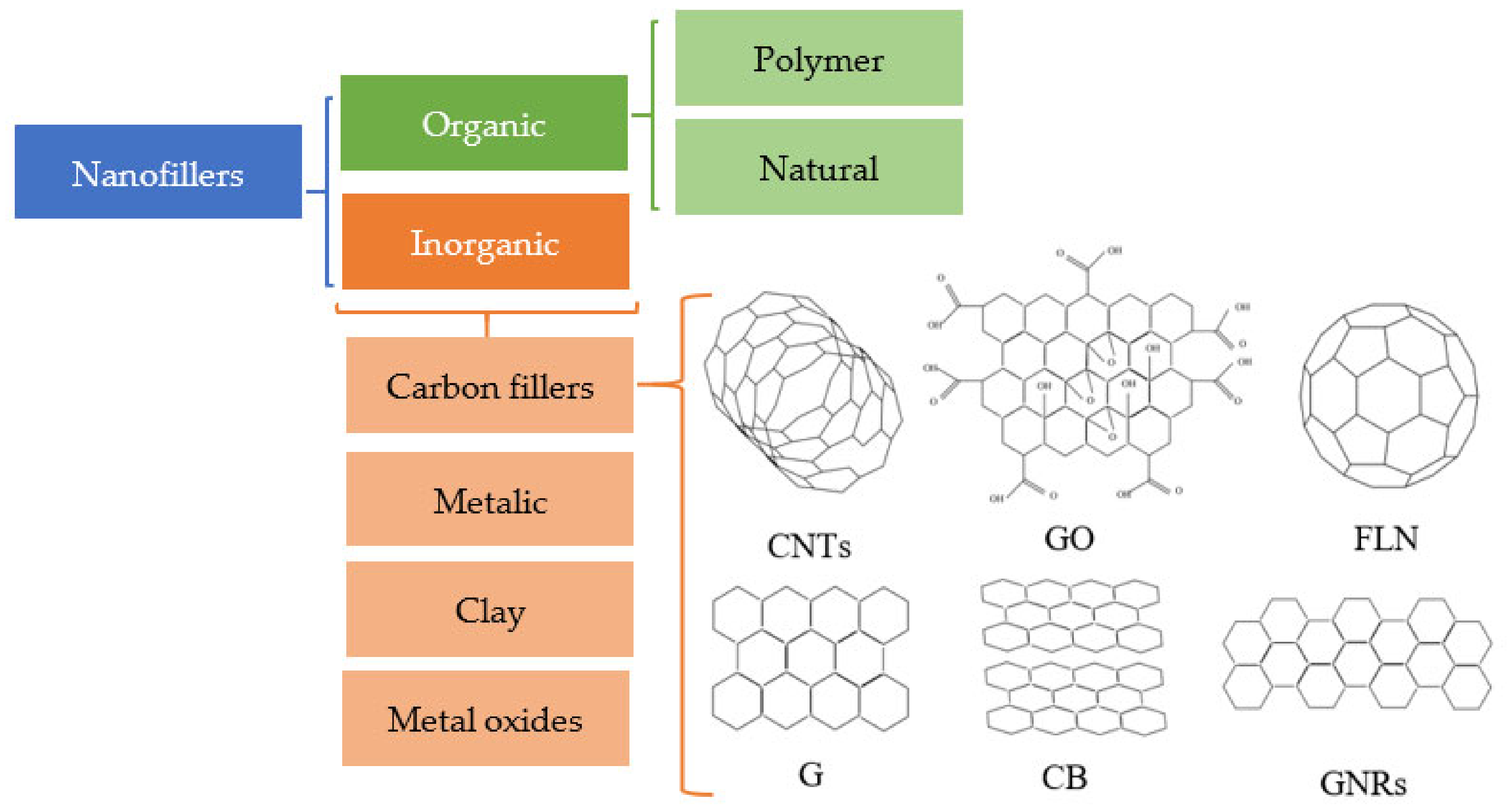
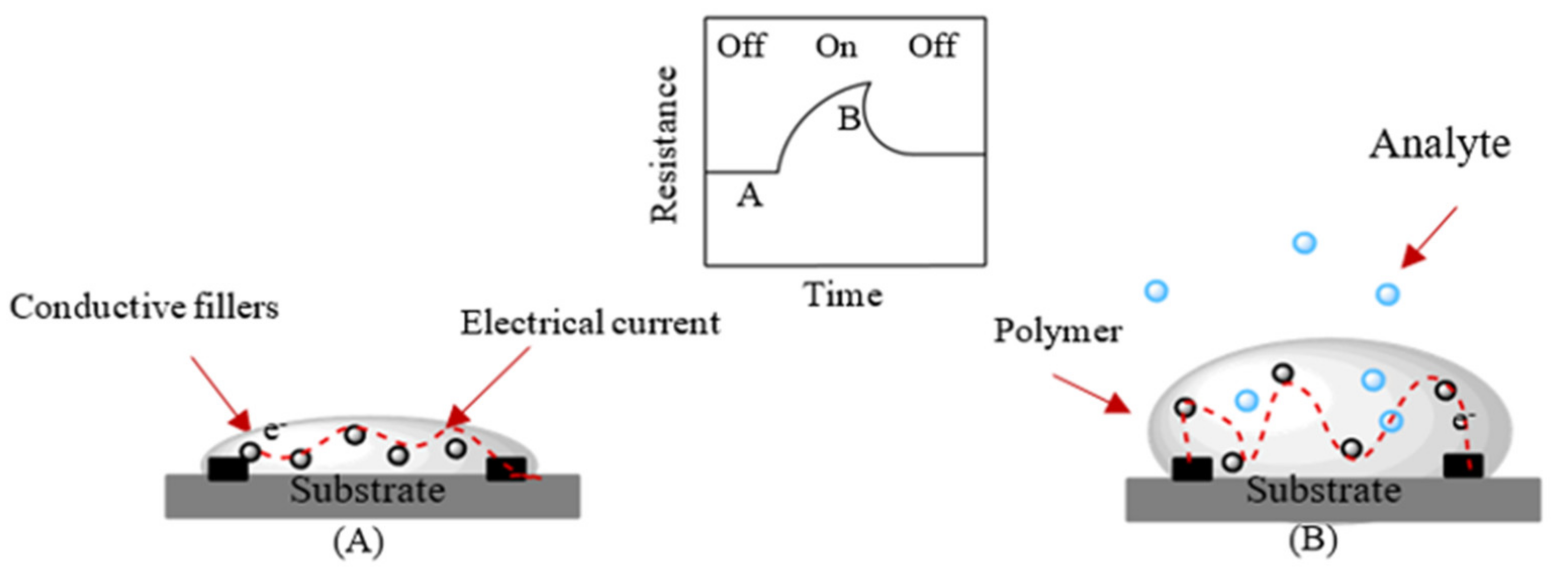
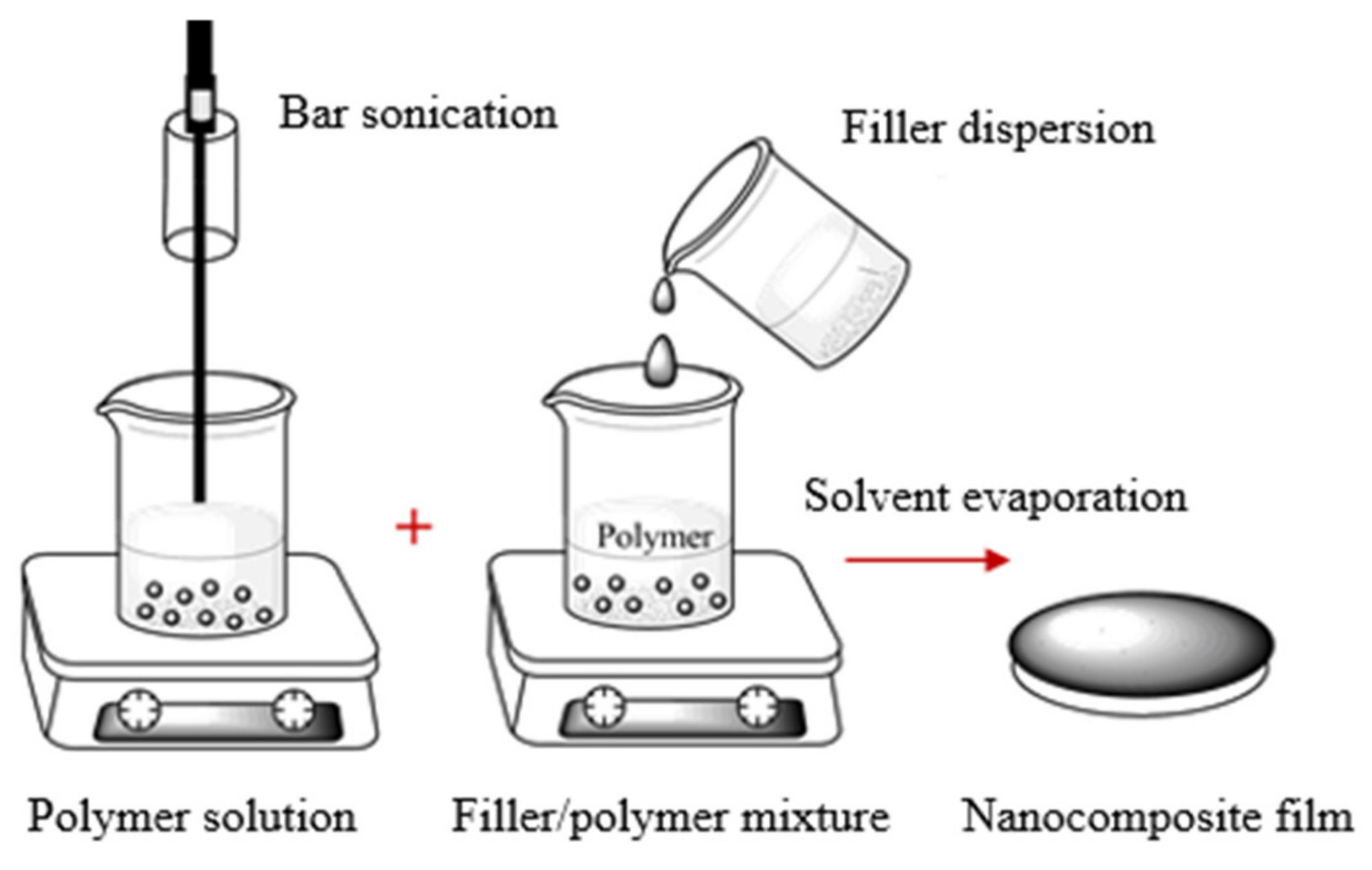
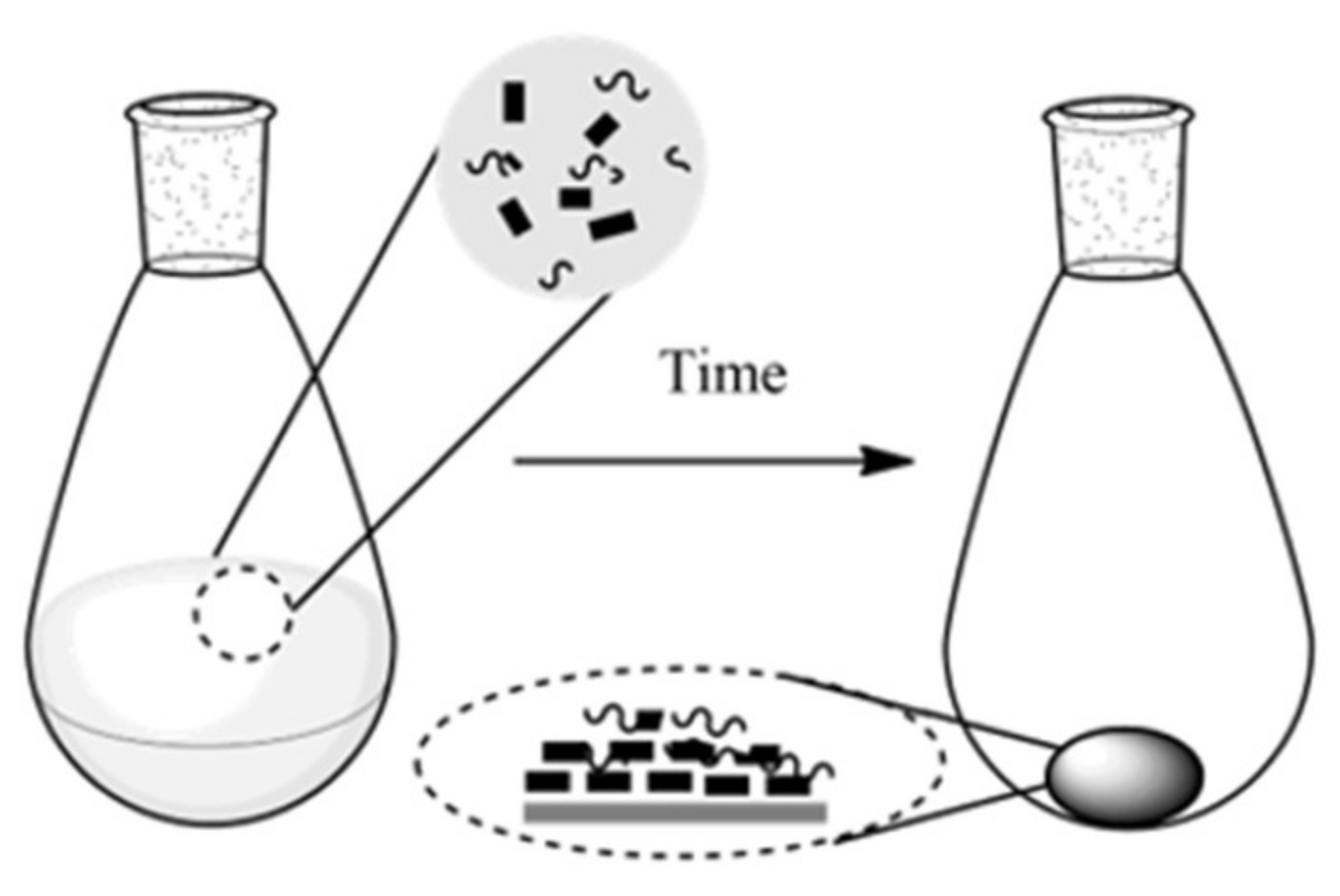


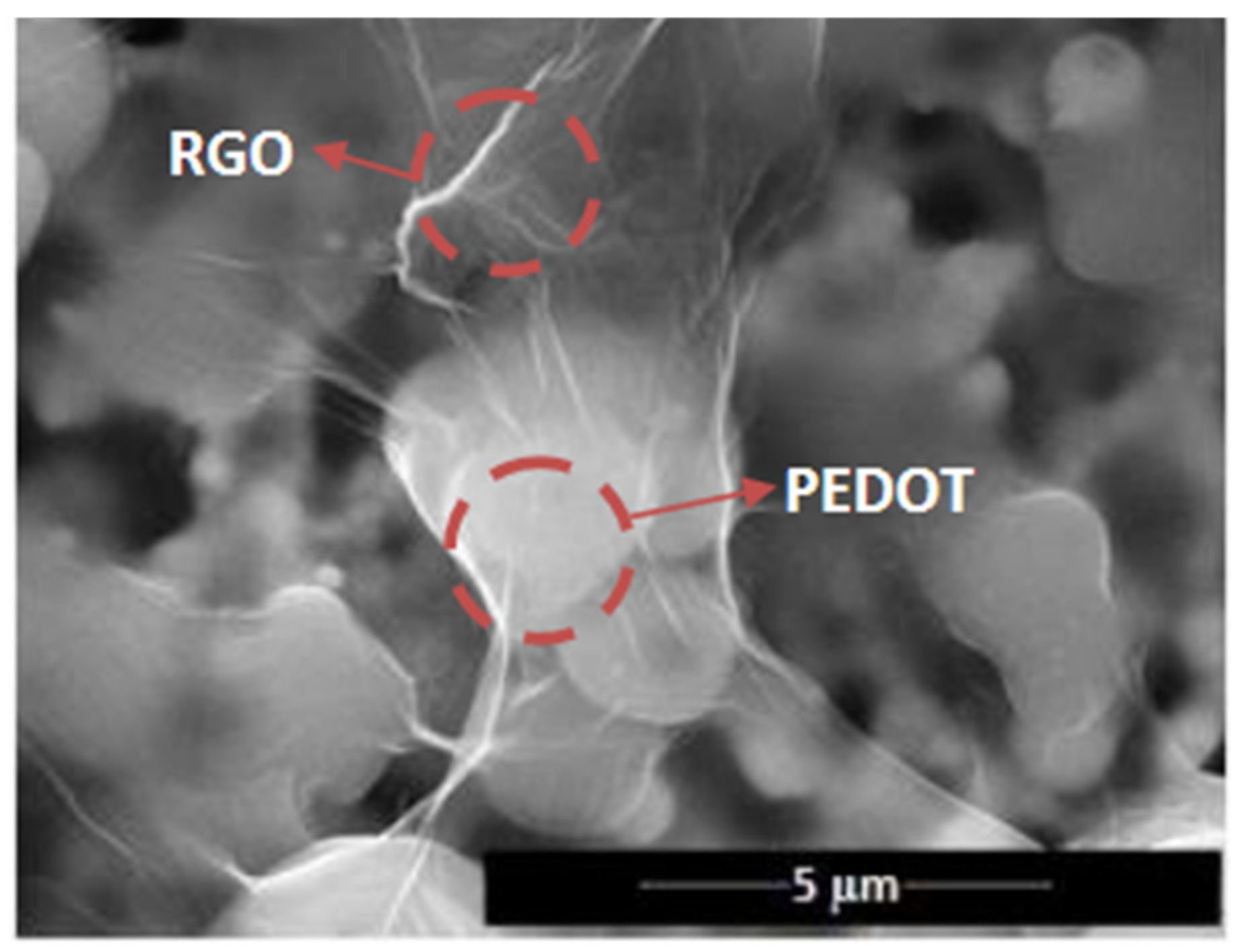
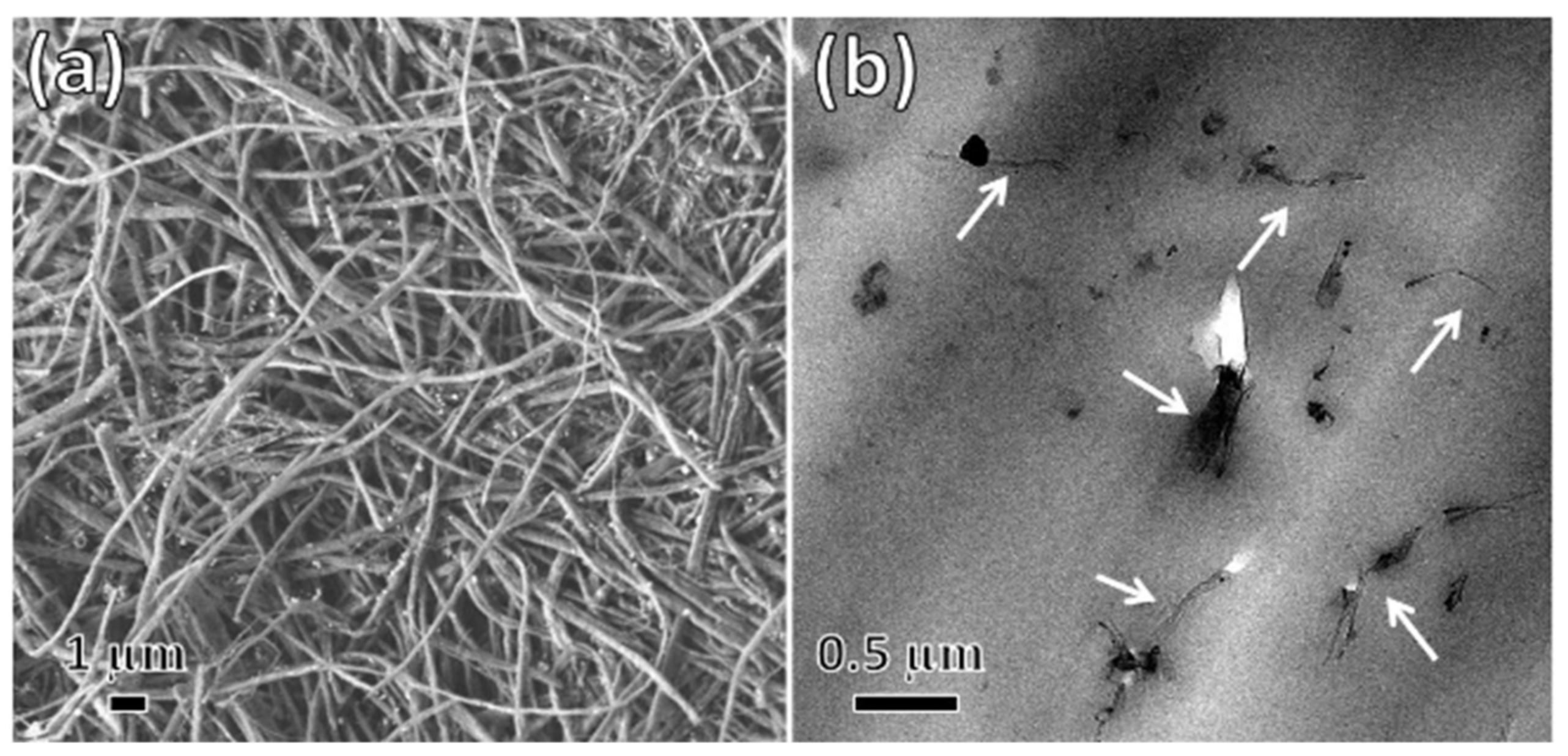
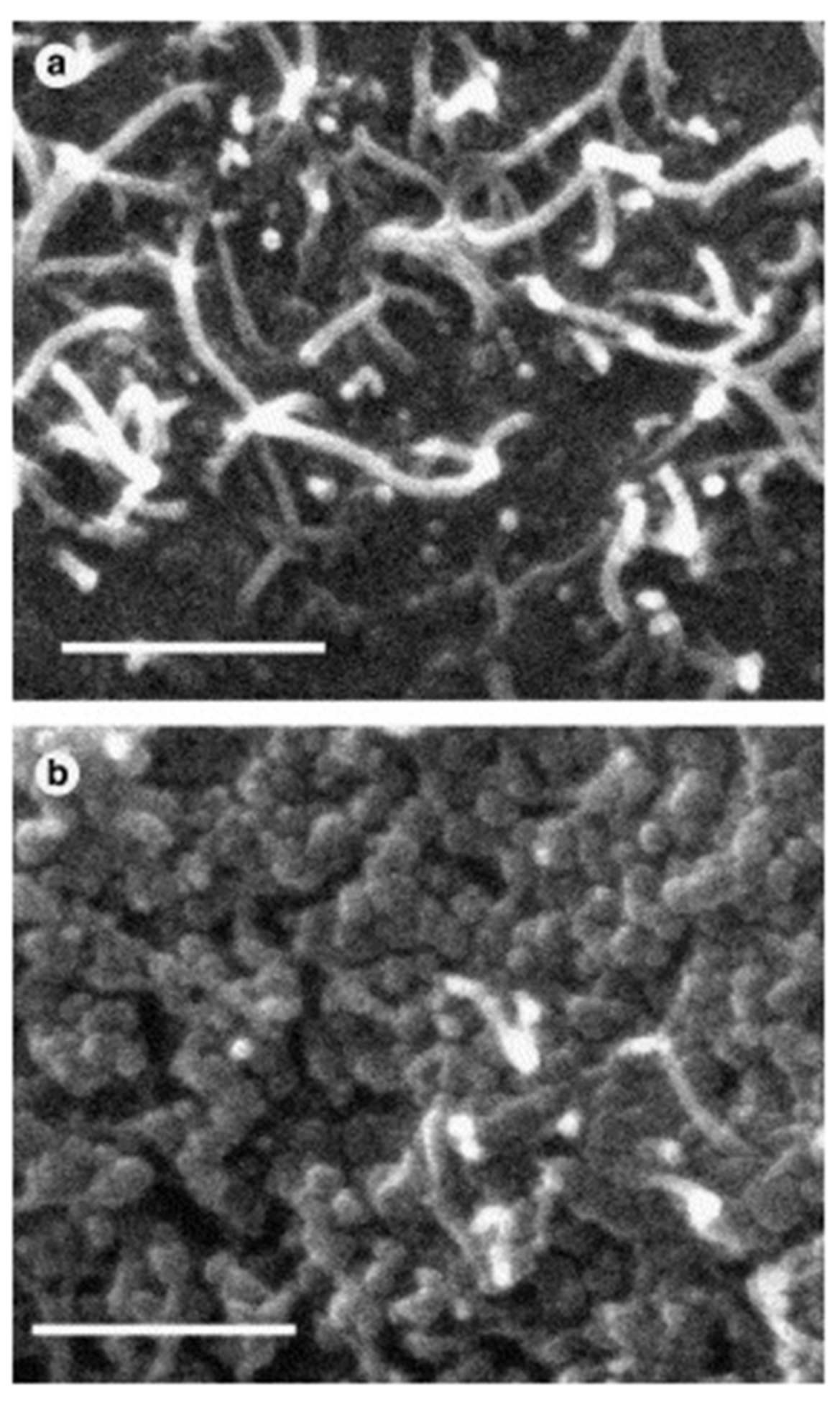
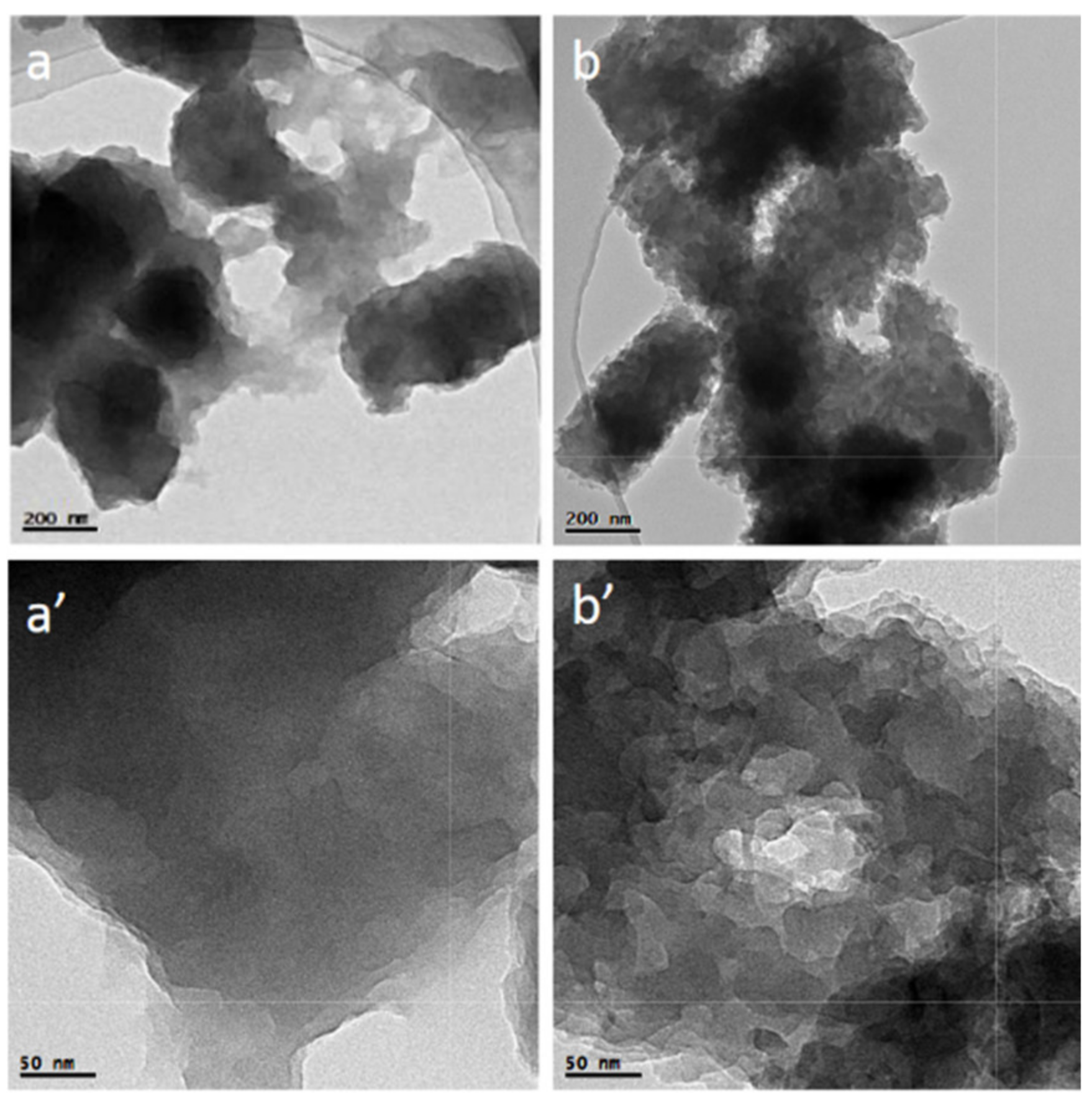
| Polymer | Filler | Filler Content (wt.%) | Method | Conductivity (S·m−1) | Tensile Strength (MPa) | Young’s Modul (GPa) | Elastic Modul (%) | Ref. |
|---|---|---|---|---|---|---|---|---|
| PMMA | rGO | 0.0 0.5–2 1–2 1–2 | In situ polymerization Bulk polymerization Sheet casting | – 3.8 × 10−4–9.9 × 10−3 4.1 × 10−4–0.018 9.5 × 10−3–0.17 | 24.2 23.0–14.2 26.0–13.0 28.0–26.0 | 0.75 0.86–0.85 0.77–0.89 0.96–1.05 | 2.8 2.6–1.5 2.2–1.5 2.2–1.7 | [66] |
| PC | GO | 1.09 (vol.%) | Solution mixing | 0.041 | n.a. * | n.a. | n.a. | [76] |
| PVA | rGO | 4–14 | Solution mixing | 6.04 × 10–3–5.92 | n.a. | n.a. | n.a. | [77] |
| PS | rGO | 0.2–0.9 (vol.%) | Self-assembly | 7 × 10−7–0.02 | n.a. | n.a. | n.a. | [78] |
| PI | rGO r-I-Ph-GO | 0 0.5–2 0.5–2 | In situ polymerization | 2.4 × 10−13 2.1 × 10−11 –8.5 × 10−9 1.4 × 10−10–0.092 | ~75.7 ~91–67 ~123–98 | ~2.5 ~4.5–5.6 ~6.8–9.6 | ~12 ~9.9–3.2 ~6.5–4.0 | [79] |
| PS | G | 0.11–0.69 (vol.%) | Solution mixing | 6.7 × 10−14 –0.15 | n.a. | n.a. | n.a. | [80] |
| PS | G | 0.1 (vol.%) | Solution mixing | 13.84 | n.a. | n.a. | n.a. | [81] |
| PVA | CNT +GO | 2–3 | Solution mixing | n.a. | ~6.5–8.5 | ~4–5 | n.a. | [83] |
| Polymer | Filler | Filler Content (wt.%) | Analyte | Analyte Concentration (ppm) | Sensitivity (%) | LOD (ppm) | Ref. |
|---|---|---|---|---|---|---|---|
| PANI | GO | 0.5 | NH3 | 100 | 31.8 | 0.05 | [67] |
| PEDOT: PSS | G | 0 2.33 | NH3 | 5–50, 500, 1000 5–50, 500, 1000 | 0.9–3.7, 4.4, 6.9 1.2–5.5, 9.6, 18.9 | <10 | [85] |
| PPy | rGO | 5 | NH3 | 33.2 | ~7 | n.a. * | [86] |
| PANI | G | n.a. | NH3 | 20, 100 | 3.65, 11.33 | 1 | [87] |
| PANI | GO | n.a. | Methanol Ethanol Propanol | 100–500 | 20.9–37 3.77 3.10 | n.a. | [88] |
| PEDOT | rGO | n.a. | NO2 | 2 | 20 | n.a. | [89] |
| PMMA | G | 0.01 g | Formaldehyde Methanol Acetone Tetrahydrofurane | 2 | 10.4 2.0 1.3 1.1 | 0.01 - - - | [90] |
| PEDOT | PIL-rGO | n.a. | Methanol Benzene Chloroform Tetrahydrofuran | 0–90 | ~3.0–4.0 ~2.2–3.5 ~2.0–2.5 ~1.5–2.0 | 1 | [91] |
| PEDOT | rGO | n.a. | NO2 | 100 | 14–15 | - | [92] |
| CMC | G | n.a. | Organic solvents Saline solution Polymer solution PVA solution | n.a. | n.a. ~0–100 ~0–25 ~0–20 | n.a. | [93] |
| Polymer | Filler | Filler Content (wt.%) | Method | Conductivity (S·m−1) | Tensile Strength (MPa) | Young’s Modul (GPa) | Elastic Modul (%) | Ref. |
|---|---|---|---|---|---|---|---|---|
| Epoxy | GNRs | ~0.3 | Solution mixing | n.a. * | n.a. | n.a. | n.a. | [28] |
| PVA | GNRs | 0–2 | Solution mixing | n.a. | 18.2–33.8 | 0.070–1.164 | n.a. | [29] |
| P(MMA-BA-HEMA) | GNRs | 0.2–3 | In situ polymerization | n.a. | n.a. | ~ 1 × 10 −5 – 7 × 10 −4 | n.a. | [30] |
| PANI | GNRs | n.a. | In situ polymerization | n.a. | n.a. | n.a. | n.a. | [94] |
| PVAM | EF-GNRs | 0.15 | Solution mixing | n.a. | n.a. | n.a. | 14% > neat PVAM | [95] |
| Polymer | Filler | Filler Content (wt.%) | Method | Conductivity (S·m−1) | Tensile Strength (MPa) | Young’s Modul (GPa) | Elastic Modul (%) | Ref. |
|---|---|---|---|---|---|---|---|---|
| SBR | MWCNTs | 10 | Solution mixing | n.a. * | ~7.5 | n.a. | n.a. | [99] |
| iPP | SWCNTs | 0–0.75 | Solution mixing | n.a. | 30.8–35.5 | 0.855–1.187 | n.a. | [100] |
| PS | MWCNT/copolymer MWCNTs SWCNTs DWCNTs | 5 | Electro spinning | 0.0053 – 0.037 0.0050 | 0.61 0.18 0.22 0.78 | 0.0163 0.007 0.0104 0.0234 | 19.4 10.8 8.6 12.3 | [101] |
| PVAc | SWCNTs | 0–5 | Emulsion mixing | n.a. | n.a. | n.a. | n.a. | [102] |
| PU | - AP-SWCNTs EST-SWCNTs | n.a. | Electro spinning | n.a. | 7.02 10.26 14.32 | n.a. | n.a. | [103] |
| PMMA | SWCNTs SOCl2- SWCNTs | 10 13 | Solution mixing | 1700 10 4 | (30–7.5) ** (370-330) ** | ** (0.4-0.2) ** (0.5-0.6) | n.a. | [104] |
| PMMA | SOCl2- SWCNTs | 0.1–0.5 | Solution mixing | 0.35–47 | n.a. | n.a. | n.a. | [105] |
| PVC | PBMA- MWCNTs | 0–0.5 | ATRP | n.a. | 30.5–52.5 | 1.35–1.61 | n.a. | [106] |
| Polymer | Filler | Filler Content (wt.%) | Analyte | Analyte Concentration (ppm) | Sensitivity (%) | LOD (ppm) | Ref. |
|---|---|---|---|---|---|---|---|
| PANI - | C-MWCNTs | n.a. * | NH3 | 2–10 | 15.5–32.0 2.58–7.20 | n.a. | [84] |
| PANI | MWCNTS | 33 ** | NH3 | 0.2–15 | ~0.01–0.3 | 0.2 | [108] |
| A: PEDOT: PSS B: PANI | MWCNTS | n.a. | NH3 | 20 | A: ~0–15 B: ~0–12 | n.a. | [109] |
| A: p-PANI B: n-PANI | MWCNTs | n.a. | NO2, NH3 | 50 | A: 65.9, 0.975 B: 0.30, 276.3 | 0.0167, 0.0064 | [110] |
| PANI | MWCNTs | 25 | AHV | 200–1000 | 1–25 | n.a. | [111] |
| PMMA | F-MWCNT MWCNT | 25 | VOCs | n.a. | 1.04–809 2.243–9.94 | n.a. | [112] |
| Polymer | Filler | Filler Content (wt.%) | Method | Conductivity (S·m−1) | Tensile Strength (MPa) | Young’s Modul (GPa) | Elastic Modul (%) | Ref. |
|---|---|---|---|---|---|---|---|---|
| Epoxy | FLN | 1–3 | Solution mixing | n.a. * | ~90–92 | ~2.8–3 | n.a. | [114] |
| Epoxy | FLN | 0.1–1 | Solution mixing | n.a. | ~82–86 | n.a. | n.a. | [115] |
| Polyazomethine | FLN | 0.25–2.5 | Solution mixing | (4 × 10−4–1.6 × 10−3) ** | n.a. | n.a. | n.a. | [116] |
| TPU | FLN | 0.5–2 | Hot melt extrusion | Modified | ~38–30 | ~65–54 | ~***(574–347) | [117] |
| PVDB | FLN- PANI | 1.05 vol.% | Solution mixing | 63.7 | n.a. | n.a. | n.a. | [118] |
| Polymer | Filler | Filler Content (wt.%) | Method | Conductivity (S·m−1) | Tensile Strength (MPa) | Young’s Modul (GPa) | Elastic Modul (%) | Ref. |
|---|---|---|---|---|---|---|---|---|
| PP | CB | 0–2.5 0–5 | Hot melt extrusion | n.a * | ~27–33.5 ~27–31 | n.a. | n.a. | [121] |
| PP | CB | 0–5 | Melt mixing | 10−14–10−4 | ~(30–37) ** | ~(0.55–1.10) ** | (900–8) ** | [122] |
| PMMA | MCB | 0.1–0.7 | In situ polymerization | n.a. | n.a. *** | n.a. *** | n.a. *** | [123] |
| Polymer | Filler | Filler Content (wt.%) | Analyte | Analyte Concentration (ppm) | Sensitivity (%) | LOD (ppm) | Ref. |
|---|---|---|---|---|---|---|---|
| A: 1 PEO B: 2 PEVA C: 3 PCL D: 4 PBS | CB | 5 n.a. | DMMP in air | (0.0017, 0.0054, 0.013) * | A:0.0869, 0.0964, 0.0834 B: 0.188, 0.209, 0.170 C: 0.577, 0.531, 0.612 D: 0.146, 0.163, 0.133 | A: 0.14 B: 0.050 C: 0.059 D: 0.19 | [124] |
| DIMP in air | n.a. | A: 0.19 B: 0.074 C: 0.049 D: n.a. | |||||
| A: 6 PEP B: 7 PVS | CB | 12, 40 1, 40 | Isooctane | A: 0–7.5, 0–0.76 B: 0–8, 0–0.26 | n.a. | [125] | |
| 8 THF | A: 0–22.5, 0–0.6 B: 0–6, 0–0.15 | ||||||
| Chloroform | A: 0–14, 0–0.7 B: 0–7.8, 0–0.28 | ||||||
| P(DTCPA-co-BHTBT) | CB | Toluene | 150–3000 | 0.39–2.02 | 15 ± 10 | [126] | |
| Polyisobutylene | CB | 8–60 vol.% | Toluene Trichloro ethylene | n.a. | n.a. ** | n.a. | [127] |
Publisher’s Note: MDPI stays neutral with regard to jurisdictional claims in published maps and institutional affiliations. |
© 2021 by the authors. Licensee MDPI, Basel, Switzerland. This article is an open access article distributed under the terms and conditions of the Creative Commons Attribution (CC BY) license (https://creativecommons.org/licenses/by/4.0/).
Share and Cite
Ehsani, M.; Rahimi, P.; Joseph, Y. Structure–Function Relationships of Nanocarbon/Polymer Composites for Chemiresistive Sensing: A Review. Sensors 2021, 21, 3291. https://doi.org/10.3390/s21093291
Ehsani M, Rahimi P, Joseph Y. Structure–Function Relationships of Nanocarbon/Polymer Composites for Chemiresistive Sensing: A Review. Sensors. 2021; 21(9):3291. https://doi.org/10.3390/s21093291
Chicago/Turabian StyleEhsani, Maryam, Parvaneh Rahimi, and Yvonne Joseph. 2021. "Structure–Function Relationships of Nanocarbon/Polymer Composites for Chemiresistive Sensing: A Review" Sensors 21, no. 9: 3291. https://doi.org/10.3390/s21093291
APA StyleEhsani, M., Rahimi, P., & Joseph, Y. (2021). Structure–Function Relationships of Nanocarbon/Polymer Composites for Chemiresistive Sensing: A Review. Sensors, 21(9), 3291. https://doi.org/10.3390/s21093291








